Mimicry, it seems, is high on the priorities list of many a traveller – myself undoubtedly included. Pasty-hued chaps whose sun-starved limbs are usually wrapped in dark, gaberdine wool suddenly thrust themselves into perfectly crinkled, bone-coloured slacks that are perhaps better suited to those whose appendages are perpetually tanned. Handkerchief-thin linen button-ups – in shades so blue they cause the Mediterranean to weep – are draped over pallid shoulders. While greying temples are fashionably topped with sun-faded, tilting Panama hats so precariously placed they teeter like an amusing ode to the pale façade of that infamously slanting tower in Pisa. Apparently, nothing denotes a tourist in the Mediterranean than a brand-new Panama hat.


My own travelling ensembles are not altogether unlike that of my outfits worn back home – floaty cotton dresses and embroidered silk scarves have no continental boundaries here. Yet there are certain aspects of poise I seem quick to adopt once my raffia-clad feet touch ancient cobblestone streets. A certain amount of confidence is valued in any country. However, one’s spine seems to suddenly straighten when one winds through the elegant alleyways and piazze that reside in abundance in La Grande Bellezza. Perhaps in continuity with my surroundings I hold my head a little higher here – one can always slouch when one gets home.


Verona, with its breathtaking beauty and ancient charm, challenges me to place my best foot forward; in Verona, I scrub-up more than alright. The enveloping beauty here is such that I feel a basic primordial desire to coordinate with it. If a four-hundred-year-old building – ravished by wars and marauding conquerors – can still look this good, what excuse do I have after a mere four decades of pampered peace? Cultural clout abounds in Verona, and my fair share I will, no doubt, devour. However, I will not be abashed in admitting that my sartorial yearnings must be swiftly satiated – and sooner, rather than later.


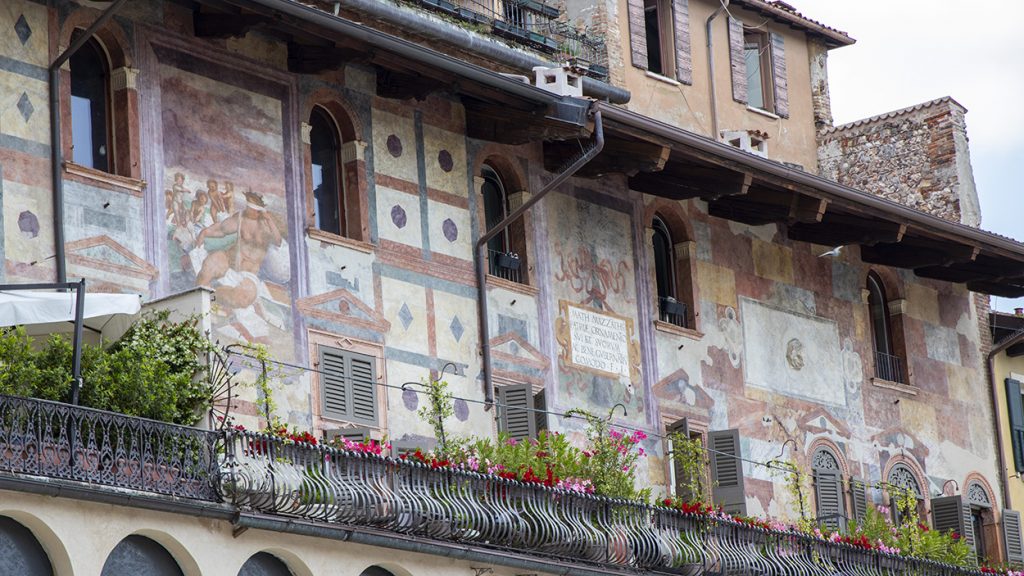
Of course, upon returning home, we well-adorned travellers soon become weary of our newly acquired garments (no matter how savvy we think we are!), deflated in the knowledge that there is very little use for that sequined cerise shirt purchased on a rather dim whim. The reality of the hum drum lifestyle which involves writing travel articles on a grey, damp London afternoon does not lend itself to such frivolity.


Now set to languish in a darkened corner of my wardrobe, brightening an otherwise sequin-free realm, this sparkly accoutrement will be a dazzling reminder of my perfectly postured holiday self. I blame the merriment of marble imitating lace, intricately detailed cornices and inlaid semi-precious stone columns, lavishly painted niches, and the gilded saints embellished in their finest plush draperies. I blame the town itself and its unwavering beauty for luring me into the myriad of glorious shops with their enclaves brimming in equal measures with frivolity and taste. I blame Verona for my sequin blouse – destined to wither and fade away in my little London flat.


Verona will never be tucked away in my mind, to be forgotten forever; to languish in the corner of my memories like a poorly chosen blouse. Aspects will, of course, blur with other Italian towns and cities, as they always do; every place, big or small in Italy has its own array of splendid cathedrals and fading frescoes that echo details of the ones admired before. Yet, there are magical spaces, those precious pockets sewn so masterfully into the very fabric of a place that could not possibly be found elsewhere.


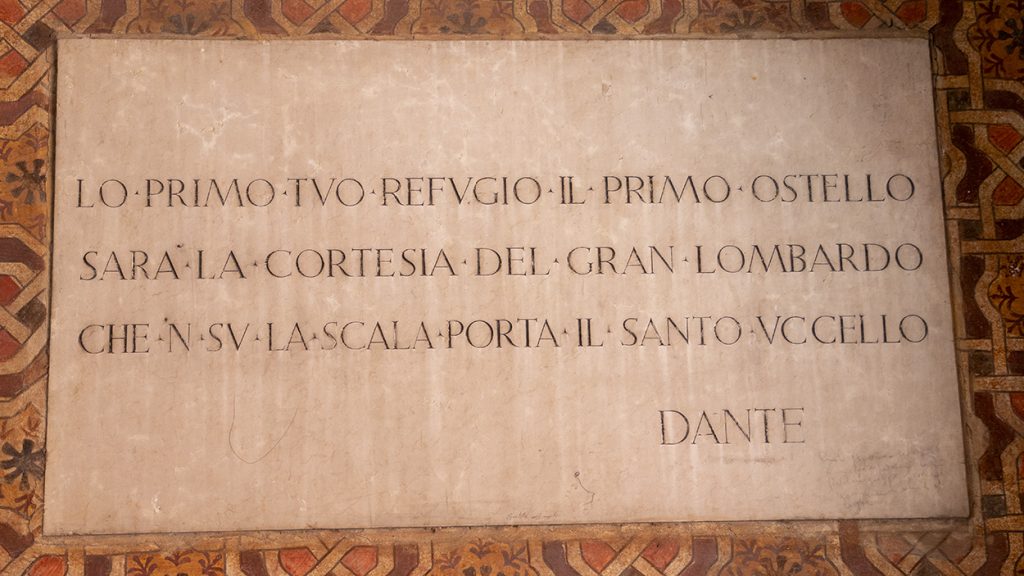
Villa Melzi and its sweeping formal gardens, its majestic alpine trees dipping their branches into the languid waters of Lake Como, could rest nowhere else on earth other than the beguiling shores of Bellagio. In Siena, that gloriously vertiginous hilltop town perched in central Tuscany, you will encounter, not merely a square or a central hub, but a gently sloping clam-shaped piazza of splendid medieval proportions and beauty. In Verona, not a city to be outdone by its well-endowed neighbours – you will find a horticultural treasure trove, briming with Veronese history and regal charm.
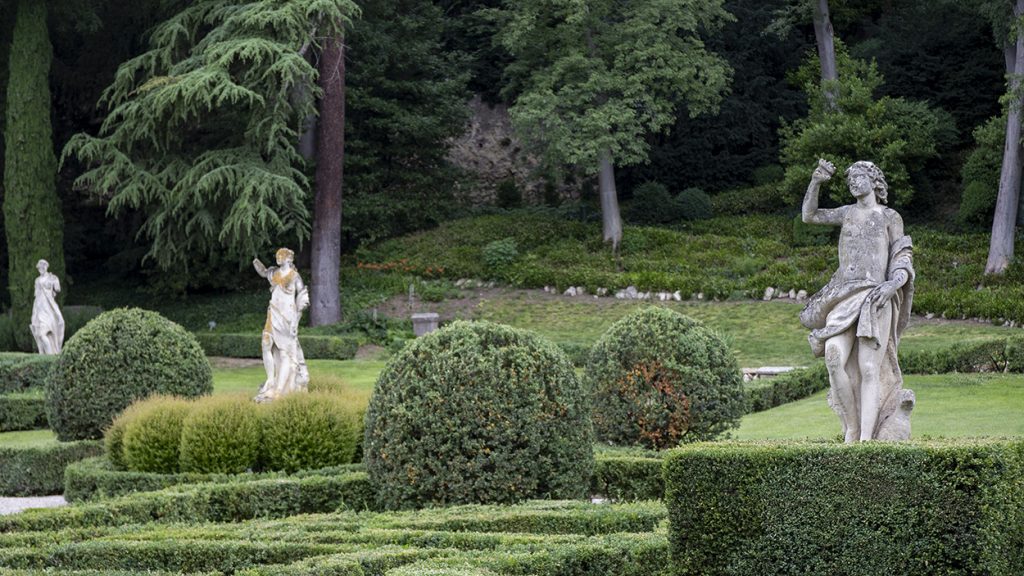


The grand river Adige that wends its way like an eel down from the province of South Tyrol (near the Italian border with Austria and Switzerland) flows for hundreds of miles before rushing beneath the ancient arches of the Ponte Pietra – the city’s oldest and most enchanting stone bridge – eventually dividing the town from its undulating hills to the east.
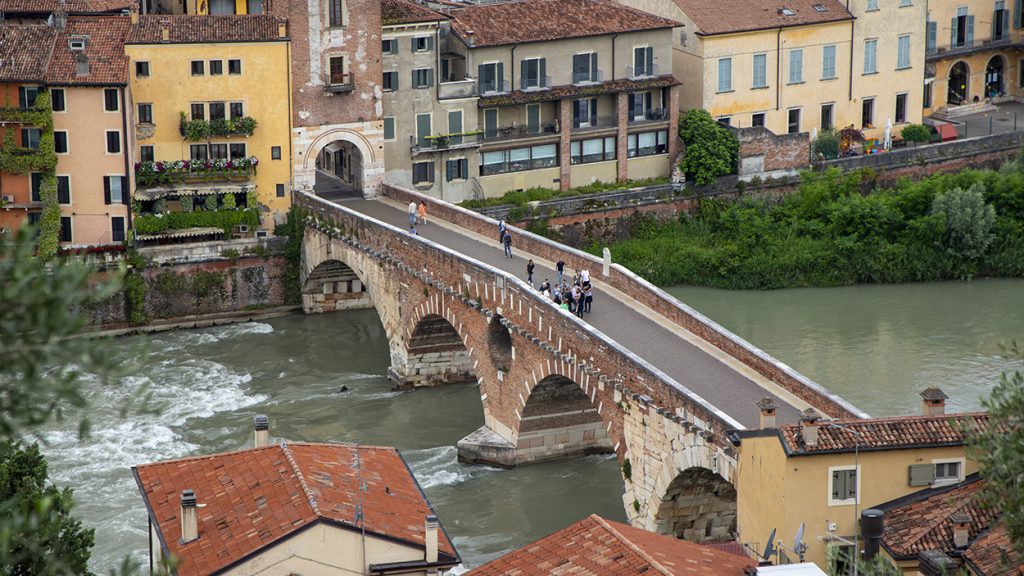
Nestled just beyond the river, at the foot of these gentle curves, lies the Giardini Giusti, a verdant canvas of Renaissance artistry. This lush haven, adorned with the elegance of the Italianate style, bears the mark of centuries under the custodianship of a grand noble lineage. Since the unveiling to the public in the late 1500’s, these gardens have stood as a living testament to the beauty of cultivating nature.


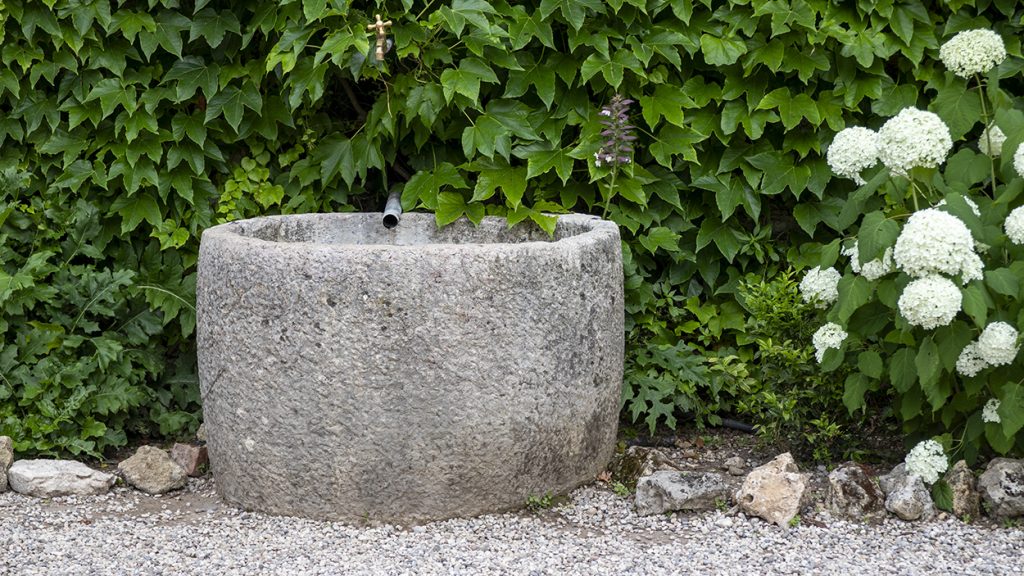
Within this landscape, a symphony of meticulously manicured greenery meets untamed naturalistic beauty, all under the watchful gaze of majestic, soaring cypress trees. Among them stands a particular cypress immortalised not in stone but in the ink of German poet Goethe’s travel writings—a living monument to timeless inspiration and poetic admiration. In his work: Journey to Italy, composed in 1817, Goethe wrote:
‘… I had removed those branches in the Giusti garden, which lies in a pleasant position, and where gigantic cypresses rise, at a great height, in the shape of a pyramid. It is probable that in the artificially cut yews at the tip of the northern gardens, we wanted to imitate this wonderful tree, whose branches all, young and old, from the base to the top all straightened up towards the sky. Desso lives no less than three centuries and can, therefore, be said to be worthy of veneration; judging them from the time when the Giusti garden was planted, they would have already reached that respectable age …’


In the fading light of the 15th century, I find myself immersed in a living canvas steeped in artistry and grace. Giardini Giusti was crafted by the discerning eye of Agostino Giusti, a knight of the Venetian Republic, and gentleman-in-waiting of the Grand Duke of Tuscany. It was in 1570, under Giusti’s inspired hand, that this sanctuary blossomed into a symphony of nature, an illustrious companion to the resplendent Giusti Palace.




Stepping into the sanctum of the 16th century atrium, a procession of majestic cypress trees materialises, leading me towards an enchanting subterranean grotto adorned with ethereal stalactites, crowned by an immense, grotesque and otherworldly mask. Though static; it feels like a living marvel, breathing tendrils of fire, and unveiling a breathtaking panorama of Verona from its regal vantage point.




Yet this garden offers more than mere vistas. Amidst vibrant blooms and ancient relics, a trove of 16th century wonders unfolds before my eyes. Fountains murmur forgotten tales, weaving a narrative through the lush surroundings. Secretive acoustic grottoes whisper elusive melodies, while sinuous pergolas beckon further exploration. Meticulously trimmed Italianate box hedges exude old-world elegance, and mythic statues breathe life into the unfolding landscape. An intricate enigma, the maze – among Europe’s oldest – invites playful exploration and I find myself relenting to its convoluted ways.


Italian Renaissance gardens diverged from cloister gardens by fostering an atmosphere for leisurely strolls, relaxation, entertainment, and solitude. These enchanting landscapes were not only green spaces; they were vibrant havens that tantalised with surprises, inviting exploration at every turn. In its heyday, Giardini Giusti was lavishly adorned with exotic corals, scallop shells, and the shimmering iridescence of mother-of-pearl, which ribboned its way through moss-covered artificial rocks, while painted landscapes and vast glass panels reflected the lush garden beyond, creating an endless play of illusion.


Unforeseen bursts of water heightened the seduction, accompanied by haunting sounds emanating from a hidden space within the nearby cliff. This surreal and captivating scene unfolds like an ancient theatre production, with nature and art conspiring to bewilder the senses. It’s a testament to Agostino Giusti’s imagination and a glimpse into the extravagant tastes of the Renaissance era. This breathtaking garden, centuries later, still manages to defy expectations and stir the soul with its enigmatic allure.


Emerging from the greenery and stepping back onto the cobbled streets of Verona, the garden seems like a sublime jewel, a glistening emerald nestled in the palm of the city’s hand, to be cherished and protected for those who follow.

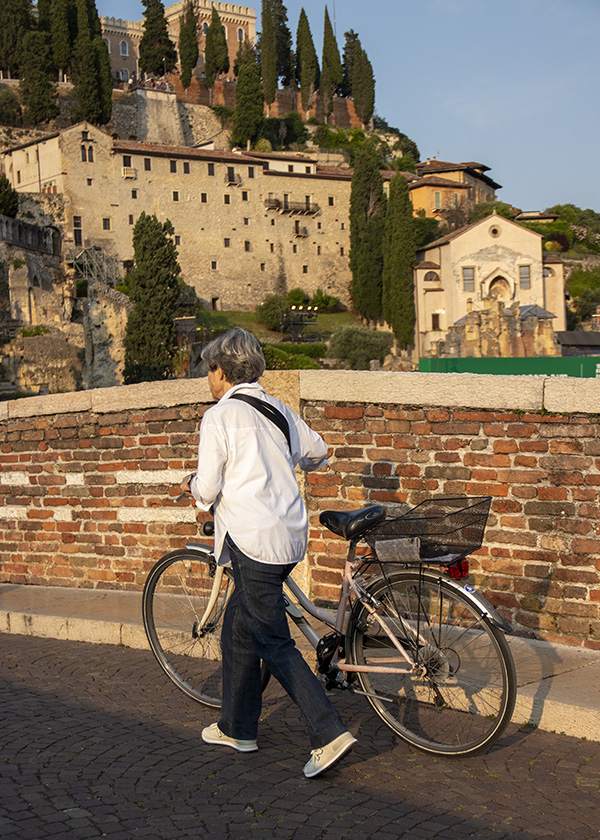
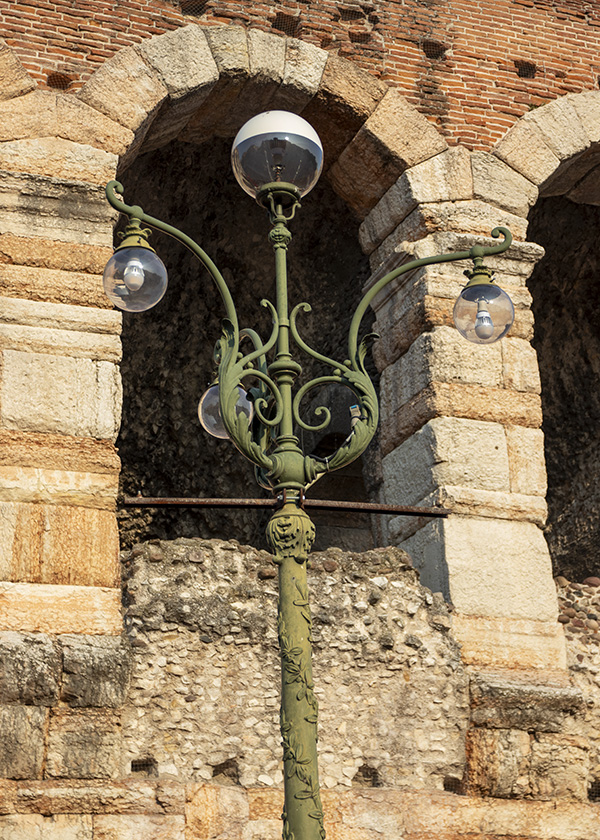
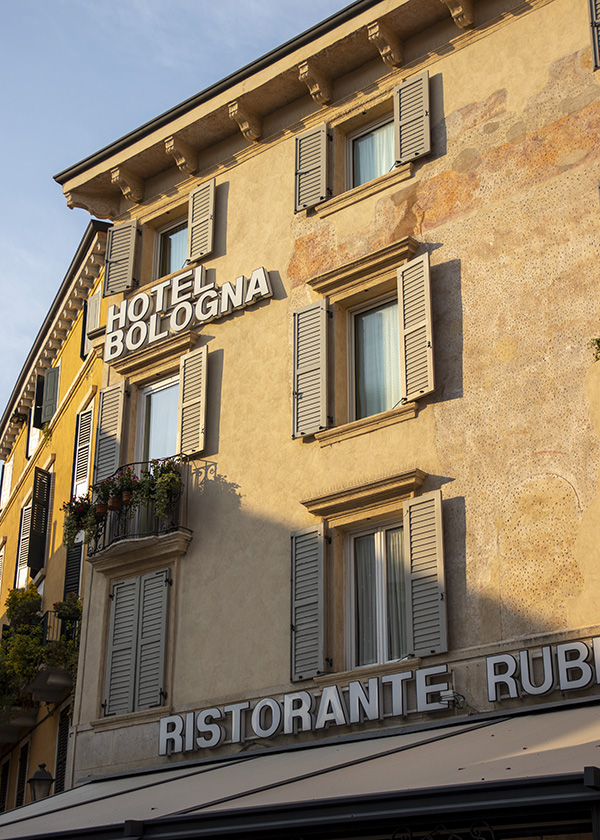
The late afternoon sun, low and radiant in the bluest sky, is momentarily obscured by the gelato-hued buildings that frame either end of the old stone bridge. Then suddenly everything is flooded with a thick, golden light – a light that transcends the centuries, bathing the city in a beauty that has been cultivated here for millennia – long before I ever made my way across this ancient overpass. This same bridge, curvaceous and wonderfully resolute, has spanned the river Adige for thousands of summers, and will continue to host a multitude of sightseers long after I leave. I hope one day to return to Verona, perhaps in winter when the tide is low and the city’s colours are drained of the sun’s generous glow – after all, beauty at low temperatures is still beauty, just without the spotlight.


I hope you enjoyed a special summer’s jaunt to the picturesque town of Verona and the splendid Giardini Giusti with The Sunday Londoner. Please do leave a comment below, I’d love to hear from you! Have you ever visited this lovely Italian town?
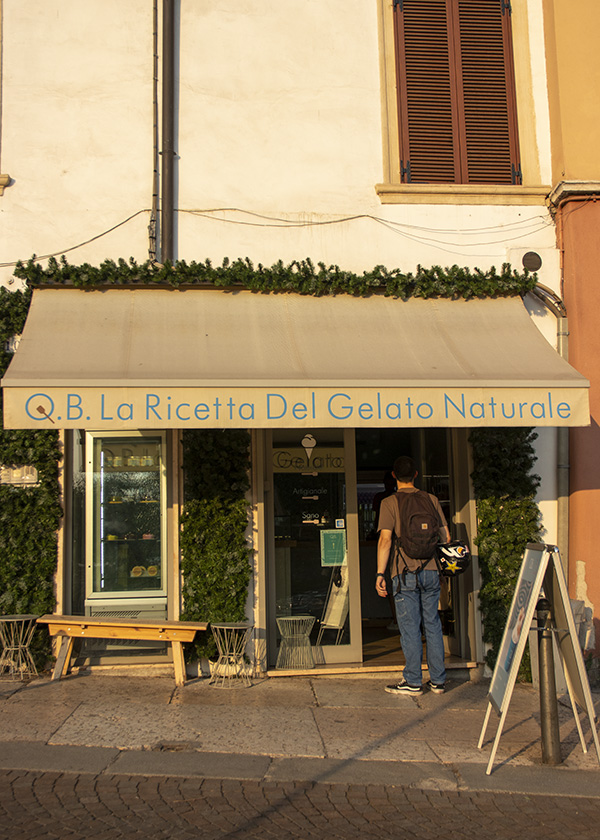
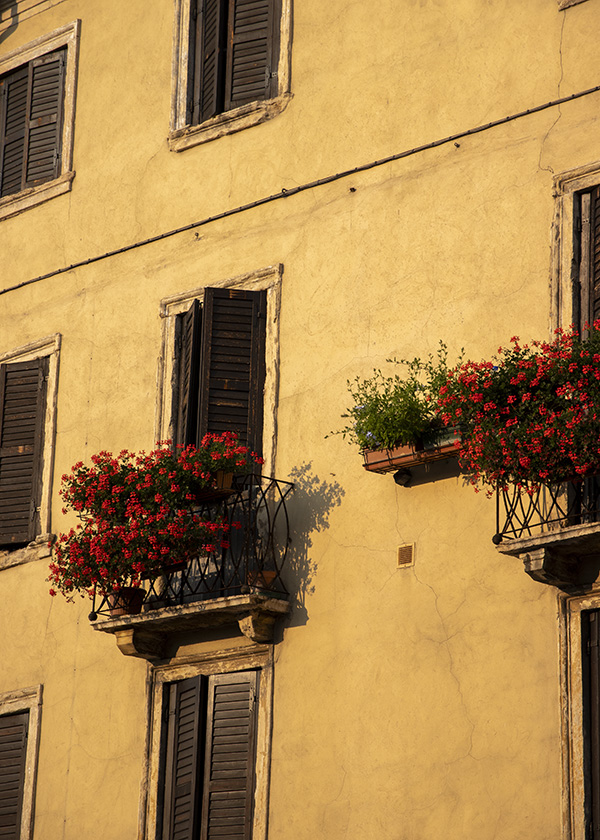
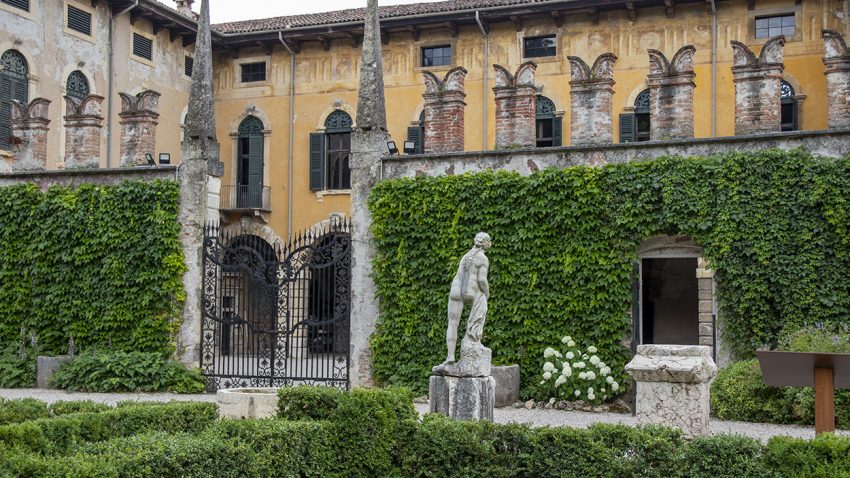
Such a beautiful description of Verona Rose and I love how your photos showcase that gorgeous golden light- it really is a lovely city and you make me want to visit again!
Lovely Rose!
For a moment there I was translated from a warm, sticky Brisbane morning into the light hearted joy of a summer in Verona with the subtle earth colours of the ancient walls.